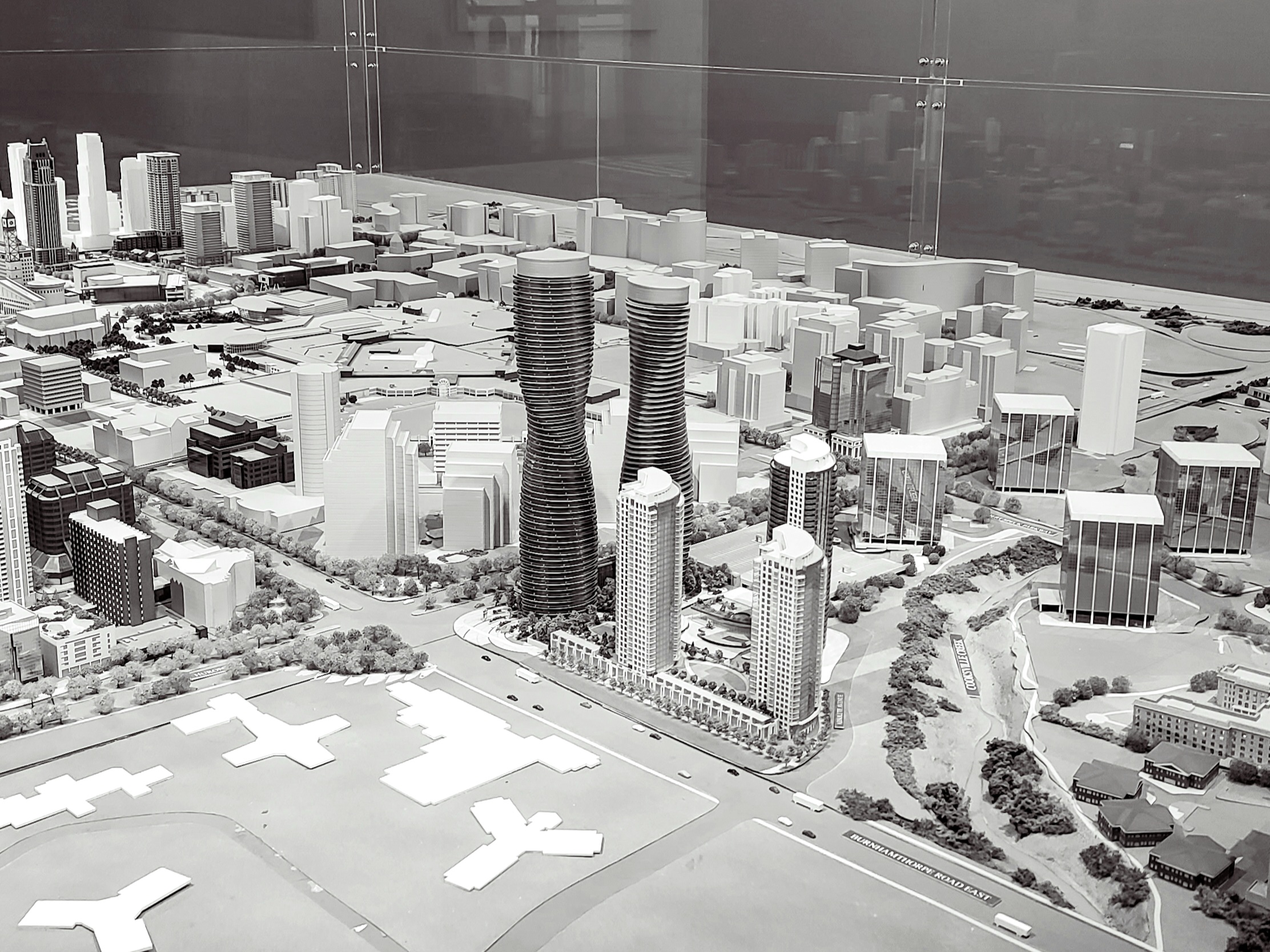Learning from the mistakes of building Mississauga
John Farrow, responsible for the first Official Plan of Mississauga, discusses key issues, sustainability, and regrets from planning the city.
In 1974, the City of Mississauga was first incorporated. Over the next two years, John Farrow prepared the city’s first comprehensive plan. Since then, Farrow has enjoyed a long and successful career in urban planning. He was formerly the chairman of the LEA Group—an infrastructure consulting firm. He was also a Distinguished Visiting Lecturer at U of T’s School of Planning and has worked extensively in Canada, and globally in the United Kingdom, India, Central Europe, and the Middle East. In an interview with The Medium, I was honoured to discuss his experiences designing Mississauga, the challenges he faced, and how the young developing city prepared for an exciting, yet uncertain future.
We began the interview with a discussion on sustainability. “Sustainability as an idea and a concept wasn’t in the planning realm,” admits Farrow. During the 1970s, the definition of sustainability largely focused on the local preservation of ecological systems, specifically on the regeneration of forests. The Brundtland Report, often cited as the first guidebook for sustainable development principles, was not released until 1987.
“When people talked about environmental responsibility,” Farrow says, “they were talking very much about local environmental responsibility. They weren’t talking about greenhouse gases at all.” Rather, the planners of Mississauga were focused on protecting the local environment. This included the Lakeshore Project’s goals to protect Valleylands (naturally occurring areas, usually between mountains, through which water flows during periods of the year), wetlands, floodplains (flat land near rivers) and agricultural land. “Climate change, certainly, was only just emerging and […] it wasn’t part of the policy thinking of the politicians at the time,” adds Farrow.
However, addressing these sustainability concerns came with their own challenges for Farrow. Guidelines for allocating and restricting land use and forest cuttings was not formally introduced to Ontario until 1969, leading to confusion among local governments. “Before I did this plan, I had to go around and lecture local councils about the need to control land use and not just let it happen in a haphazard way,” he explains.
So, what was the primary focus when planning the city? “Uncontrolled urban growth,” Farrow states. “That was the major concern—that urban growth was going to be scattered all over the place and was going to eat up farmland, destroy the natural environment, lead to inefficient use of public infrastructure and public services, and destroy local communities. That had to be stopped,” shares Farrow.
Another objective on Farrow’s mind was the large majority of people who commuted out of Mississauga into downtown Toronto. With a growing population, the planners knew that this system was not sustainable. So, Farrow explains that they prioritised building employment centers, especially around Square One. As of 2011, StatsCan reported that 55 per cent of commuters in Mississauga also worked in their city.
Although the planners always intended for Square One to be Mississauga’s center, political influences didn’t necessarily agree. Lobbyists argued for having the central commercial area in Cooksville, calls that have since been echoed due to its public transit connections. From the planners’ perspectives, however, the “Cooksville area did not have the capacity to develop in the way that the modern office and retail center would develop. I’m not sure I like the way Square One has developed. But this was more in line with what was possible,” explains Farrow.
Expectations at the time for the city’s growth were far more modest. Since, the female participation rate in the workforce was much lower, the city’s planners were unable to accurately predict the amount of traffic generated from each household. Had they been able to anticipate the high commuting volumes, Farrow explains that there might have been greater emphasis on building social facilities such as daycares, which were virtually non-existent, alongside creating denser, tighter neighbourhoods to decrease commuter times and improve families’ quality of life.
Although large public transit infrastructures have been slow to arrive to Mississauga, initial plans had already reserved land for a light rail transit, specifically along Burnhamthorpe and Lakeshore connecting to Toronto. But Farrow blames himself and his team for the slow deployment of the infrastructure, noting that back then, they did not fully understand funding worked: “It’s not just putting a line on a map and saying you can have it. You’ve got to get commitments to fund it. So, planning major bits of infrastructure, which isn’t linked to some funding source, isn’t very effective.”
Farrow used this as a learning opportunity for his later work. “I’ve been frustrated at how slowly the transit lines have come to Mississauga and so that’s something that in my subsequent work I’ve addressed more aggressively,” he shares. Currently, Mississauga is focused on completing the Hurontario Light Rail Transit Project. This 18-km, 19-stop line connects the Port Credit Go Transit Station, the Cooksville Go Transit Station, the City Centre at Square One, and the Brampton Gateway Terminal. Construction began in 2021 with an expected completion date in the fall of 2024.
For many of us, Mississauga is home. John Farrow helped shape the original landscape of the city, but now it’s our turn to use past experiences alongside modern information on sustainability to build a better and stronger Mississauga.

